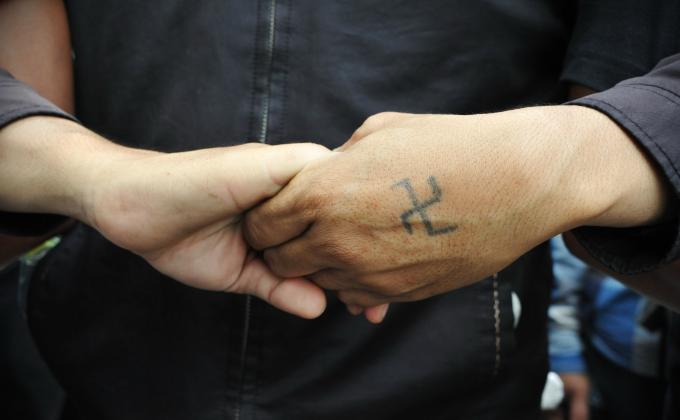On April 15, 2020, German police arrested four suspected members of an Islamic State (ISIS) cell. All four men were Tajik nationals but appear to have been residents of North Rhine-Westphalia at the time of their arrest. They are suspected of joining ISIS in January 2019 and subsequently receiving orders from high-ranking ISIS members in Syria and Afghanistan to conduct attacks on targets in Germany, including US military bases and personnel. While the details available to investigators are continuing to trickle out into the public sphere, the suspects do not appear to have travelled to join ISIS in the Syria-Iraq theatre. If these men did in fact receive orders from high levels of the ISIS organization despite never traveling to its “caliphate,” then these arrests yet again underscore ISIS’s sustained ability to plot attacks through its virtual plotter model, relying on ISIS supporters outside the conflict zone. One potential avenue for ISIS to plot attacks using this model is the population of German returnees.
To date, returnees have not carried out any terrorist attacks in Germany—although they have been involved in plots. In February 2017, German residents Adnan Sutkovic and Zulhajrat Seadini were arrested in Turkey for plotting to return to Germany and carry out “Paris-style” attacks, including at a music festival. The attack was reportedly ordered by high-ranking Swiss-German ISIS member Abu Musab al-Almani (born Thomas-Marcel Christen). Two German foreign fighters in Syria, Oguz G. and Marcia M., tried to support the attack logistically. They contacted female ISIS supporters in Germany to find women who would marry Sutkovic and Seadini, thus providing cover for them before the attack. The plot—which was foiled by German intelligence—highlights the potential for German foreign fighters in Syria to coordinate with ISIS supporters in Germany.
German authorities may have foiled a second plot later that year; although significant question marks surround this alleged plot. In December 2017, German police arrested returnee Dasbar W., charging him with plotting an attack on an ice rink on Karlsruhe. Early information about this case suggested that, upon his return from Syria in 2017, Dasbar W. scouted out targets near the ice rink and applied for jobs as a delivery driver, which he allegedly intended as a means of carrying out a vehicular attack. Germany’s Federal Prosecutors Office later dropped the charges because the testimony of the informant whom Dasbar W. reportedly told about his plot became unreliable.
Although this is the extent of the plots that German returnees have been involved in, it is important to note that German authorities have foiled several other plots in the last two years by foreign ISIS members and supporters, including the aforementioned April arrest involving four Tajik nationals.
Where are Germany's foreign fighters today?
In all, more than 1,000 German citizens have travelled to Iraq and Syria to join militant groups, with the vast majority joining ISIS. More than 330 Germans are known to have returned. Most arrived back in Germany in waves between 2014 and 2015, with a smaller number returning each year since.
Hundreds of German foreign fighters remain in Iraq and Syria and around a third of Germany’s thousand foreign fighters are still active in the region or detained by security forces. Up to 200 German nationals are held by Kurdish forces in prisons and camps in northeastern Syria. There is a high probability that some of these individuals still in the region will attempt to return home at some point—with the accompanying risk of plots targeting German soil. As ISIS’ insurgency continues in Iraq and Syria, its capabilities to coordinate operations with foreign fighters leaving the region will likely grow as well.
Moreover, the Kurdish-led Syrian Democratic Forces (SDF) lack the capacity and resources to continue detaining thousands of ISIS fighters and their families in prisons and camps in northeastern Syria, particularly after Turkey’s military incursion into northern Syria. Detainees thus pose an escape risk. Since the Turkish incursion began in October 2019, more than 100 ISIS detainees have reportedly escaped SDF prisons. Poor conditions in prisons and camps have contributed to unrest among detainees, and fears of COVID-19 spreading in these detention centres could trigger riots and additional escape attempts.
In March 2020, ISIS detainees staged an escape attempt at an SDF prison in Hasakah known to house foreign fighters, including at least two German citizens. Several detainees of unknown nationality may have escaped. If German foreign fighter detainees escape or are released, it will become difficult to track their status and whereabouts. Individuals seeking to return to Germany could use the same routes and methods employed by past returnees. Transit countries for returning German militants could include Balkan countries like Bulgaria and countries with major European transit hubs near Germany, such as France, the Netherlands, Belgium, and the Czech Republic.
The future of counterterrorism in Germany: where should the focus lie?
Given Germany’s struggles with a recent surge in attacks and plots by individuals and groups associated with the far right—including the high-profile attacks in Halle in October 2019 and Hanau in February 2020—there is a risk that German authorities will significantly deprioritise the threat posed by jihadist terrorists, especially German foreign fighters.
But the issue is not binary: the threat does not emanate from either violent white supremacists or Salafi jihadists. Both movements pose terrorist threats simultaneously. Germany must be careful not to shift the lion’s share of its counterterrorism resources to focus on one threat, forsaking the other. Instead, authorities must seriously prepare for a future in which both white supremacist extremists and Salafi jihadists might simultaneously escalate terrorist campaigns—a future in which these movements each play off the other, exacerbating extremism, and leading to ever more polarization in German society.










